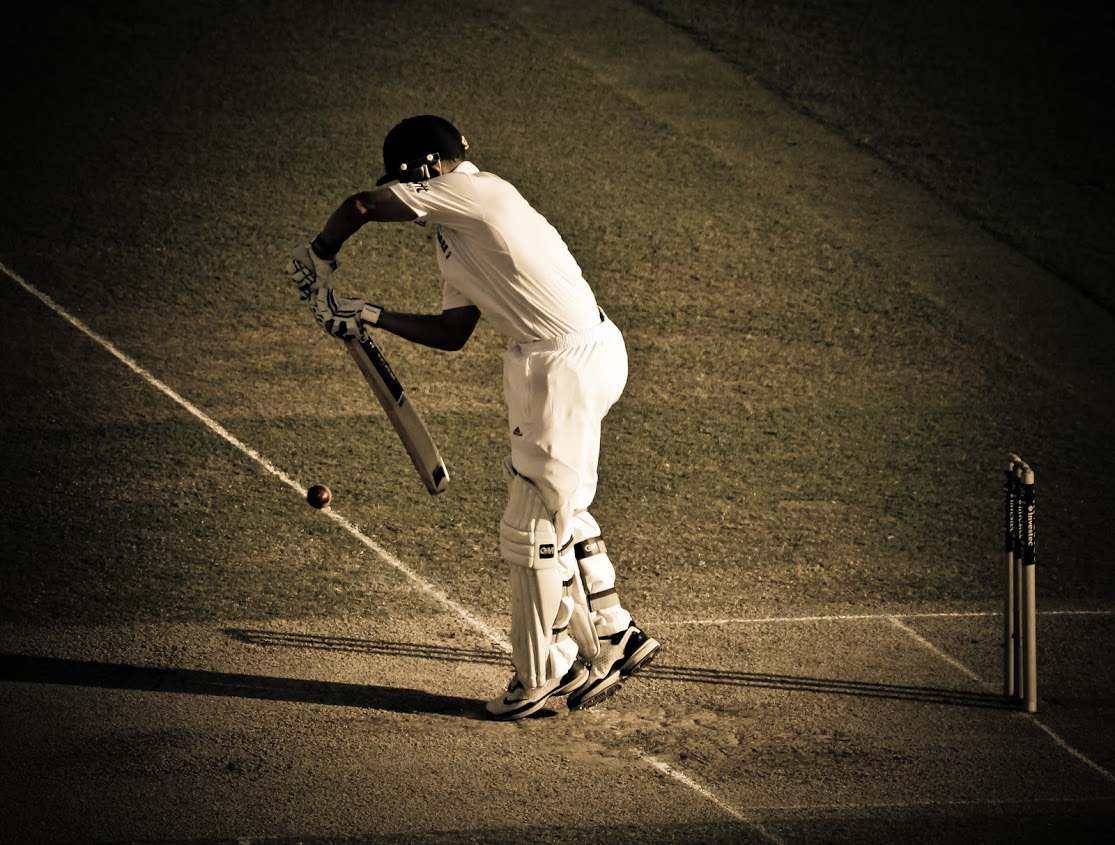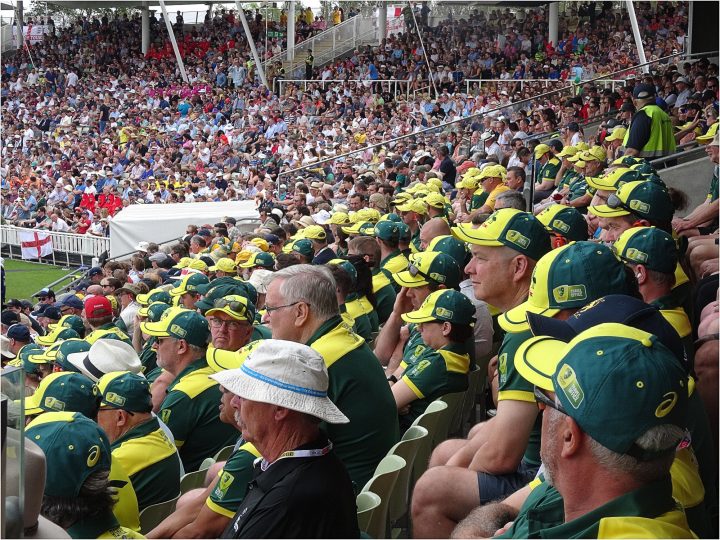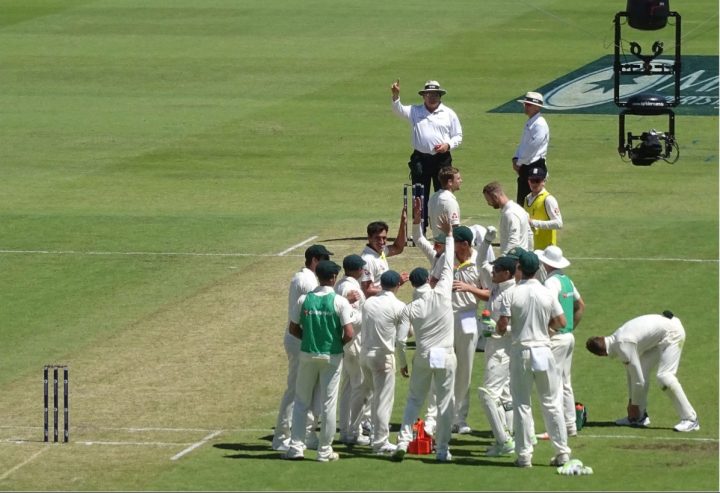Wow. What a day we had yesterday. I’m bored of the whole Pietersen saga to be honest, but I have to say that yesterday was very, very interesting to say the least. I’m kind of glad I kept out of it!
Anyway, as you’ve probably read enough about Pietersen, Flower, Cook, Downton, Clarke etc I’d like to move discussion in another direction. The breaking news is that Pakistan and Worcestershire’s Saeed Ajmal has been banned from bowling in international cricket. What is my reaction to this? As a Worcs fan you might assume I’d be outraged. I’m not. I actually think it’s long overdue.
I’m no biomechanical expert, so I can only make judgements based on my own eyes and my gut feeling, but I’ve long suspected that Ajmal is breaking the rules. Some might argue this is a result of my alleged racism, Islamophobia, or bitterness about England’s 0-3 defeat in the UAE a couple of years back, but they’re wrong.
I thought Ajmal should be banned when England beat Pakistan in their infamous spot-fixing tour four years ago. What’s more, I thought he should be banned when watching him play for my beloved Worcestershire this summer.
For me it comes down to this simple observation: to my eyes, Ajmal is breaking the rules. And now it has been confirmed. The biomechanical experts believe that every single one of his variations exceeds the permitted 15 degrees of tolerance.
I can understand the argument that chucking (I’m using this word because it’s the vernacular not because its pejorative) makes the game more interesting, but I cannot accept it. The game would probably be more interesting, and possibly more of a spectacle, if batsmen were allowed wider bats. The bottom line is that laws are laws and they’re there for a reason: to protect the basic principles of the game.
The balance between bat and bowl is essential to the integrity of cricket. Some might argue that the batsmen have too much in their favour these days (especially in limited overs cricket) so allowing bowlers to chuck redresses the balance. To these people, I’d say that two wrongs do not make a right. I’d rather they moved the boundary ropes further out again, did away with power plays (for example), than allow bowlers to effectively become baseball pitchers.
I know talk of baseball is a little over the top, but isn’t the following logic undeniable: once young cricketers realise that chucking is more effective than orthodox spin bowling, they’ll all imitate Ajmal rather than Herath or Swann. Sooner or later, therefore, the vast majority of spinners will be chuckers. It won’t be an exciting novelty then; it will be the norm and cricket will be forever changed.
As a purist this is something I dread. I’m not going to apologise for this. I know people will disagree – and they’re entitled to do so – but I personally think that chucking blights the game. The ICC have let this go too far already. It’s brilliant they’re finally cracking down on the arm and law benders, but had they acted decisively sooner then the decision to ban Ajmal would not be so controversial.
Having said all that, it’s impossible not to feel sympathy of the likes of Ajmal and Senanayake on a personal and professional level. It’s absolutely ridiculous that the former can take over four hundred international wickets, and become a household name, before firm action is taken. Ajmal is bowling exactly the same way now as he was last year or four years ago, so why ban him now? He must be utterly confused. What’s more, to ban him on the eve of what would surely be his last world cup seems particularly cruel.
It’s important, however, not to let human sentiments cloud our judgement on this. The welfare of one player (or a handful of players) is not more important than the game itself.
This issue is bound to polarise fans across the world. Bullets will fly. Some will hit, whereas others – like accusations of racism or bias at the ICC – will miss spectacularly. Murali was allowed to bowl unimpeded throughout his career, while white bowlers like James Kirtley and Kane Williamson have received bans.
I know I’ve only scratched the surface here. There are plenty more points to be made. Should the fifteen degrees of tolerance be extended to twenty or twenty five degrees? Maybe all bowlers chuck to a certain extent, including seamers, so Ajmal has been treated unfairly?
I’ll let you guys chew the fat. All I’ll say is that I personally believe a line has to be drawn somewhere. But as a purist, I would say that wouldn’t I.
James Morgan










The 15 degree guideline was brought in to accommodate the “bowling” action of Muttiah Muralitheran. This has caused a major problem at all levels of the game where “bowlers” are being encouraged to push the barriers to the limit and beyond, knowing that umpires lack the courage and support to call them for throwing.
At Premier League level and above, umpires are told not to call throws, but after the match to report the bowler to the relevant authority for later analysis. When the bowler is videoed in nets at a later date he can, quite easily, disguise a suspect action, receive approval for his/her action from a County Board, and then go back to old ways in subsequent matches.
I don’t know any umpire who has not queried an action only to be told “He has been looked at by Middlesex, or Lancashire, or Notts, and they have said, “No problem”.
When I called a bowler in the Yorkshire Rose Cup Final 4 years ago I was criticised by some. Supporters were quite noisy at the time. I was told by the captain on field that this bowler had been “looked at” by Yorkshire and told that there was nothing wrong with his action. My reply? Yorkshire isn’t umpiring this cricket match … I am. After the game the bowler concerned congratulated me for having the courage to call him because, “I’ve been getting away with it for years ump!” I called a Premier :League player for throwing just two weeks ago. The player and the captain weren’t too pleased, but I dealt with it, and the game moved on without repercussion.
Thank goodness the ICC is now taking this problem seriously and I can only encourage them to carry on. Saeed Ajmal is an illegal bowler and he must change his action so that he bowls legally. I hope that umpires will now do their job by applying the laws of cricket during matches, as they should be. If the umpires get it wrong, then they must bear the consequences, but they need to get it right, be courageous, and deserve the full support of the ECB, the County Boards, the MCC and the ICC.
“The 15 degree guideline was brought in to accommodate the “bowling” action of Muttiah Muralitheran”
Well that’s nonsense to start with. It was brought in to accommodate the bowling action of every single bowler in the history of cricket. test showed that Muralitharan exhibited less straightening of his arm than almost every international seam bowler playing at the time.
If you want to pick on one bowler at the time, pick on McGrath.
Can you find a link for this? I seem to remember people saying they set the limit at 15 degrees because Murali’s doosra was 14.9 (or similar!). I’ve certainly read in cricket autobiographies (thorpe’s for one I think) that many players thought the rules had been changed simply to accommodate Murali. Re: McGrath I remember his name being mentioned at the time, but wasn’t he in the 8-10 degree range? Forgive me if I’ve got this slightly wrong, my memory is a little hazy.
AB is correct. It doesn’t matter what “many players” think.
I would have thought that the players know the rules, see these players close up, study endless tape, and understand the advantages gained from bowling with a flex or bend. Murali’s doosra was reported at 14 degrees and they set the limit at 15. I have no idea whether this was coincidence or not, but I accept that seamers extend close to 15 degrees too. I always thought a certain Aussie seamer (but not McGrath or Lee) looked extremely dodgy. I think the fact that Ajmal has had ALL his deliveries banned (or rather all of them failed the test) is significant. This shows he’s clearly breaking the rules. Whether we agree with the rules is another matter I suppose.
“My reply? Yorkshire isn’t umpiring this cricket match … I am”.
Brilliant – and brave.
Right, lets test your skills as an umpire:
Here is a bowling action:
. . .
\ | /
/ | \
How much is the arm straightening during release? A simple estimate will do
I am surprised to read the ICC has banned Ajmal. I never expected it to happen to such an established bowler. So I hope the ICC will now examine all bowlers for the degree of flex and not show any compassion. Ideally it would be better if this is done at the first class level.
However on chucking, as a non purist, I feel that any bowling so long as it is not life threatening should be legalised and the batsmen should learn to fend with unusual deliveries.
But you are suggesting that bowling become throwing and not bowling at all.
When a law is as specific as the 15 degrees limit, and a bowler has failed a test so unequivocally, it’s impossible to do any other than ban him.
FWIW I think the current limit about right. Expand it any further, and most bowlers will be forced to go right up to the new limit to remain competitive – which will both change the game and fail to solve the problem.
The only alternative is abolish it altogether, which would be absurd.
Meanwhile, the Yorkshire top order looks superior to the current England lineup…
http://www.bbc.co.uk/sport/cricket/scorecard/o36827
Thanks for your comments. There is another argument that says the game is changing / evolving all the time, and chucking is just part of this evolutionary process. Again I can see the logic, but for me cricket has always been about ‘bowling’ with as straight an arm as possible. Unorthodoxy is fine, but not if it breaks historic rules and the fundamentals of the game. Unless there is a crack down, actions will get worse and worse until the game becomes unrecognisable. But this is just my opinion. It would be great to hear from some Ajmal supporters.
I appreciate where you are coming from James. My own feelings fall somewhere between the two.
Like Giffenman above, I feel we should welcome and encourage unorthodoxy. It makes the game more entertaining. It provides a more equal challenge between bat and ball. It provides more variety and encourages, hopefully a broader range of shot making from batsmen to counter.
So from a purely spectacle point of view, I have sympathy for Ajmal.
However, the whole point about drawing a line is one that I understand too and umpiring it must be even harder.
I suppose my only issue has always been with the somewhat arbitrary nature of the 15 degree element of it all. Much like last time with the Murali furore, one can’t help but think by further opening this can of worms, with even better motion sensing tech, that many previously unsuspected actions will come in for lots of scrutiny.
Still, it’s nice to be talking about something else.
the somewhat arbitrary nature of the 15 degree element of it all
Any precise limit is going to be somewhat arbitrary, but 15 degrees (or something close to it) does at least strike some sort of balance between what is physically possible (clearly zero isn’t), and what might overwhelm the other elements of bowling skills.
And if we want to redress the batting/bowling balance, would it not be simplest either to slightly reduce the regulation width of the bat or increase that of the stumps, neither of which changes should fundamentally alter the nature of the game ?
I wish people would stop banging on about bats, The ICC have conducted numerous tests and found that the difference between bats now and bats 20 years ago is negligible.
If you want to complain about anything, complain about unnecessarily short boundaries and flat pitches with nothing in them for the bowlers. Complain about the useless kookaburra balls that half the world insists on using that go soft and won’t swing.
As for Ajmal, I think its a huge, huge shame, as he was probably the most exciting bowler in the world to watch. But I can’t think of any kind of improvement to the rules beyond the current system of 15 degrees.
Allowing fast bowlers to bend their arms would completely ruin the balance of the game and be very dangerous at amateur level, and it would be utterly impossible to imagine an effective scenario where spinners were allowed to throw but fast bowlers weren’t.
Also, it appears Ian Gould is the common factor that links all bowlers reported for throwing.
I don’t have a problem with the 15 degree threshold – while a little arbitrary, the bio-mechanists say that that’s about the point where a “chuck” starts to be (in most cases) visible to the naked eye – and I don’t have any evidence to contradict that. And assuming that’s true, it becomes a useful guideline for the umpires to report someone for further testing. And at lower level, if an umpire thinks it looks visibly dodgy, it probably is, unless the player shows up with a recent note from his biometrician ;-)
The trouble comes in the testing process, it’s difficult to replicate match conditions, and a bowler who’s close to the margin may well be good one day and illegal the next, depending on tiredness, the pressure he’s under, or even what he had for breakfast! So you need to be able to match-test. Still images aren’t that useful (as a throw is a straightening of the arm, a bent arm is OK as long as it stays bent) so you need a lot of them, and different angles can confuse. So ultimately what you wind up needing to call things correctly (once you decide it’s not up to the umpire*) is some kind of near real-time 3-d rendering of the bowlers arm. And the technology isn’t there yet.
Should we ever get that near-real time 3-D check of an action I’d like to see chucking treated a bit like running on the pitch – the bowler gets a warning, followed by an innings bowling ban if he repeats, with remedial action kicking in if he’s banned a couple of times in a series.
* I can still remember Ross Emerson calling Murali every 2nd ball of an over in Australia, regardless of whether it was a doosra or an offie – which made it pretty obviously a pre-meditated call. Either they were all thrown, all the doosras thrown, or none thrown.
Just to throw a spanner in the works, the unintentional bending and straightening of the arm due to the forced excess supination of the shoulder needed to generate a doosra is biomechanically fundamentally different to the action of throwing employed by fielders or baseball pitchers which typically features a pronation of the arm through the release point. So perhaps the comparison is invalid.
Calling Ajmal a chucker is therefore a fundamental misunderstanding of the situation here. You would never teach someone to throw the ball with the same mechanism that he uses to bowl, so in what sense is it a throw? Yes the elbow straightens, but in nothing remotely similar to a throwing action.
Well said AB.
They should use bowling machines instead. It is idiotic to expect a human being to contort in all sorts of funny places in order to bowl at a batsman. No, use machines with allsorts of coloured balls to keep batsmen guessing. Take as much humanity out of the game as possible. Surely Peter Moores must have some statistics on this. And Giles Clarke would make more millions out of patenting all the national colours on each machine. They could bowl all night if necessary to keep over rates up. No injuries, no tendonitis, no bad backs – the future is now!
A well balanced article James. Very much enjoyed. Like you I fully understand the pro’s and con’s of the bent elbow, but unless the game of cricket is to be irrevocably changed, this chucking has got to stop. Better late than never. Commiserations to the bowlers involved for the position in which they find themselves.
Protect your site. For the quality of the writing alone, it’s one of the best.
Just to clarify matters, the decision to call or not call a bowler remains entirely with the umpires.
ICC regulation 1.1.2. Nothing contained herein shall override an Umpire’s responsibility and discretion to apply Law 24 of the Laws of Cricket.
It is clearly up to umpires, at all levels, to have the courage to call throwing and then report it to the relevant authority. If it is not called during a match it is unfair. The job of umpires is to ensure that a match is fair, equal and fully in accordance with the laws of cricket and the regulations of a competition. If an umpire sees a case of throwing, he or she is duty bound to call it.
I think, Peter, that international umpires are expressly told not to call bowlers for throwing. Instead, they must report them and the bowlers will then undergo testing.
This is a consequence of both Darrell Hair and Ross Emerson calling Murali on the field in Australia and the problems that ensued.
You can see why that came about, as throwing is such a sensitive and politically-charged issue. But it does appear to tamper with the fabric of the Laws.
They cannot be instructed not to call John. I suspect that in the past they have been warned that if they call a bowler and it causes a major international incident, it could damage their careers. This cannot be imposed upon them, but you would have to be mad to call a bowler under these circumstances, and lose a job that you love along with the salary. It’s a classic case of cricket politics riding roughshod over the laws, and of course the umpires. I am hoping that this recent ban and the ban on two other first class players is a sign that the authorities are not going to be blackmailed any more and it will give the umpires the courage and the support to do what is right.
bad decision
https://www.facebook.com/muhammadyasiransariofficial?hc_location=timeline
I’m glad the ICC are clamping down, the previous tests were not rigorous enough. They are using additional labs now as well. My only regret is that it’s Ajmal, one of my favourite current players, who’s been banned. It would happen to Pakistan, wouldn’t it? I wonder what would happen if they tried to ban an Indian. It’s got to be one rule for everyone.
I think they are quite intolerant of dodgy actions in India. I’m not sure an Indian bowler would get to international level if there were serious question marks. I’m just thinking out loud here but I can’t recall a single Indian bowler with a suspect action (correct me if I’m wrong) whereas Pakistan, Sri Lanka and even Bangladesh have had a few over the years. I don’t think this is coincidence. I think the cricket public in these countries simply have a different attitude to throwing. That’s my educated guess anyway (and I accept my evidence is somewhat anecdotal).
I can’t think of an Indian bowler with a dodgy action either, which is just as well, as I’m sure there would be a row if the ICC tried to ban him.
“Some will hit, whereas others – like accusations of racism or bias at the ICC – will miss spectacularly. Murali was allowed to bowl unimpeded throughout his career, while white bowlers like James Kirtley and Kane Williamson have received bans.”
Just to follow up this quote and tie in with what Clive has said: surely the distinction that will be of interest in future is not white bowlers v the rest, but “Big 3” bowlers versus the rest. Williamson, Senanayake and Ajmal make it three out of three bans for “the rest” since the ICC reforms were pushed through, and I understand a Bangaldeshi and a Zimbabwean have recently been reported.
I hope this is just a coincidence. But, even if it is, I’m sure the likes of Clarke, Edwards and Srinivasan would sooner everyone got het up about some dodgy actions than anything that might be taking place at executive level.
Well, Bahji wasn’t exactly ramrod straight..
Bob Woolmer, reviewing the Indian side ahead of an England series, referred to their spinners (of the day) having ‘modern off-spinners actions’. I suppose being coach of Pakistan had encouraged the euphemism.
Yes Harbhajan Singh! I’d forgotten about him. I actually never had a problem with his action, but I remember others did.
Whenever I saw him bowl, I wondered about Harbhajan. There seemed a distinct jerk and flex just before release.
And during that series in the UAE, I thought Hafeez’s action was more questionable than Ajmal’s. It was like watching Eric Bristow.
A huge blow for Pakistan which shattered their world cup 2015 Preparation. Saeed Ajmal should appeal and try restore himself as early as possible. It is good thing Ban is not fixed any duration, He will be back whenever he will correct his action. Read Full Report
http://cricchanel.com/saeed-ajmal-banned-bowling-action-by-icc/
Personally,I think it’s ludicrous to expect umpires to be able to look at, and judge bowlers actions, while almost at the same time expect them to be looking down to see if bowlers are bowling No balls, and then immediately look up to judge LBW.
I’m not saying they can’t do it, but over a 5 day test match I think it’s too much. Add in all the politics and I can quite see why the ICC would want to look at this issue in more detail and scrutiny away from the heat of battle.
I think the 15% rule is an attempt to have some standard to measure by! and give some leeway. It is never quite as simple as saying everything is black or white. Take reverse swing for example. Is it right that the fielding side should fundamentally change the nature of the ball by loading one side with moisture to make it heavier than the other side? If that is right , why don’t the manufacturers create balls that are lopsided from the start?
It’s not a problem for experienced umpires Mark.
So how DO you simultaneously look at both the bowling arm and the front foot? Experience doesn’t give you two sets of eyes.
It’s not simultaneous. The front foot lands before the ball is released.
So does any potentially problematic straightening of the arm, by definition. So it IS simultaneous and hence impossible to monitor accurately. You’re just guessing.
Sorry pressed the button too soon. The front foot lands well before the ball is released. It lands when the ball arm is round the back at or just above waist level.
Didn’t see your post before I corrected mine AB. There is plenty of time to move the eyes away from the front foot to the delivery arm. Try it for yourself. Practice your action as a spin bowler. You will see that the position of the back arm at the point of front foot contact is waist height behind your back or just above. Definitely no guesswork. Not allowed. Don’t forget that there are two umpires and you can confer, or either umpire may call a throw. The ball remains live until the bowler takes the first step for the next delivery.
I am unconvinced. Even watching from a side-on angle at mid-on and not having to worry about spotting no-balls and lbws, it is incredibly difficult to tell the difference between a straightening of the arm and a rotation of the shoulder, and as a spin bowling coach I understand the biomechanics of the bowling arm better than most.
Standing as an umpire with a pretty useless point of view, I doubt you could even make an informed guess as to what was going on. To call a no-ball for throwing on such spurious evidence is extremely dubious.
I’ve only played, coached and umpired this game for 58 years. What do I know?
If there is “plenty of time to move the eyes away from the front foot to the delivery arm”, why do test match umpires frequently get the third umpire to look for a front foot no ball when a wicket falls?
While I admire your confidence in your ability, and of fellow umpires Peter, I do remember that you were on here a while ago attacking DRS, and in particular Hawkeye. Vested interest perhaps? Hawkeye has shown conclusively that for decades umpires were wrong not to give batsman out LBW on the front foot to spin bowlers. In addition , numerous decisions were wrongly given for balls pitching outside leg stump.
Umpires are only human. They make mistakes, I don’t blame them for that. But the idea that they are far better than up to date technology is just Luddite thinking to me. Before cameras, and slow motion replays , high tech was a couple of blokes in white coats with 6 pebbles standing behind the stumps. That was the best there was then. It’s not true now. Armies of clerks used to sit at desks with quil pens adding up columns of numbers. Computers do it now in a fraction of the time.
Of course we are only talking at the moment about the highest level of the game. Umpires are going to be needed for quite a while longer at lower level matches because the cost is prohibitive. But history shows that as technology becomes cheaper it is more widely used.
Not opposed to DRS and haven’t criticised DRS. You are confusing DRS with Hawkeye which is just one tool at the disposal of the third umpire. So let’s deal with Hawkeye, which is where my criticism remains.
Hawkeye is used in tennis because the authorities, umpires and players have all agreed to accept Hawkeye even when it is known that it is not an accurate measure of exactly where the ball has pitched. As a matter of proven scientific fact it is inaccurate 60% of the time but they have decided that it is “close enough” for tennis.
It is a very different matter when it comes to cricket. Not only is it inaccurate in terms of the pitch of the ball but even more inaccurate when it comes to the predictive element. That explains why, when an umpire give a batsman not out, LBW, and where the prediction shows that less than half of the ball “might” have gone on to hit the stumps, it remains umpire’s decision on the field of play. In real life, half a ball going on to hit the stumps is definitely out, LBW. I can assure you that half a ball is perfectly capable of removing a bails. In these cases it shows that Hawkeye is not trusted to be accurate enough to overrule the live umpire, on the spot, behind the stumps.
The debate is really this. Is it accurate enough to be useful and if so, how should it be used? In my opinion, based upon experience, it is not there … yet.
On the question of umpires deciding that a bowler is throwing, we must just disagree. I have to do it week in and week out and I know that the umpires are in a perfect to make the decision.
I am a full time umpire, standing in matches with professional, ex-professional and up and coming professional players, up to and including England and ex-England players.
I called an ex- Middlesex and Essex player 3 weeks ago for throwing. No complaints. He knew it and so did I. I have called bowlers twice in 15 years of umpiring. Once in the White Rose Final and once in the Middlesex Prem. I have referred two other bowlers bowlers without calling them, because I was not sure. It does not happen very often and we should not build it up out of all proportion.
Excuse me if I ignore the “vested interest” slur. I will debate this with you based upon an assumption that you are honest in your opinions.
“Excuse me if I ignore the “vested interest” slur. I will debate this with you based upon an assumption that you are honest in your opinions.”
Why do you view a simple question as a slur? It was never meant as a slur. Maybe a slight bit of banter but nothing more. You seem very touchy about it. Just as you seem very touchy about Hawkeye. Judging by the number of poor decisions given by umpires over the decades about where the ball pitches I find it some what ironic your criticism of Hawkeye.
Can you please give me detailed data, and who produces it to back up your claim that 60% of Hawkeye is “inaccurate.” It wouldn’t surprise me if it was not 100%, but 60% inaccurate? I find that very hard to believe. Unless of course it means that it is millimetres out. I have seen cases where the ball has pitched 2 feet outside leg stump’ and the umpire has given it out. What % of accuracy is that?
As to your claim that I might not be arguing from a position of honesty I find that a trifle pompous. I am not in any way questioning your umpiring record. I’ m sure you have done a splendid job over the years, but I thnk there are increasingly more accurate and consistent methods than humans. It is nothing personal against you or your profession. Im sorry if you take it as such.
Quote from the current Hawk-Eye website in respect of tennis. “… it would be easy to argue from one end of the sequence to the other that the ball landed within 2mm of the back edge of the line, or at the other end of the sequence almost 10cm outside.”
I cannot take you seriously. You watch cricket matches where “umpires” give batsmen out LBW when the ball pitches 2 feet outside the leg stump? I am sorry, the simple technique that properly trained, qualified, assessed and experienced employ eliminates the possibility of such a silly situation.
Well now you are just being ridiculous, I have seen many, many poor decisions in Test matches. The umpires are properly trained, and are qualified, assessed and experienced. Yet they still make very poor decisions. I have seen balls pitched 2 feet outside leg stump and be given out LBW in test matches. Batsman given out when the ball was going to miss another set of stumps. Appalling run out decisions. (Although thankfully not recently thanks to technology)
To pretend these things have never happened means I can’t take you seriously. If umpiring decisions were so great why bring in all the technology in the first place? The ICC says that the % of right decisions has increased with the advent of DRS and hawkeye. Most players trust the technology.
I don’t blame umpires for getting things wrong, they are only human. But to try to pretend that umpires never make mistakes if properly trained and experienced is arrogant nonsense. If you are typical of the attitude of most umpires (which I very much doubt) then let’s have more technology please.
Mark, you have never seen an umpire, and I mean a proper umpire in a proper cricket match, give a batsman out LBW where the ball pitched 2 feet outside the leg stump. I am sorry. if you are not prepared to debate this issue seriously, I can’t help you.
I agree with you peter.
Please don’t tell me what I have and have not seen. I have seen some appalling umpiring decisions over the decades by so called experienced and trained umpires. Fortunately, so has the ICC which is why they have brought in more and more technology.
It’s a great pity I can’t shake you by the hand. I’ve always wanted to meet the person who has never made a mistake. Now I have met him.
Mark, you are prone to exaggeration to such an extent that it is impossible to hold a sensible conversation with you.
The extent of flexion was apparently around 40 degrees – irrespective of the particular delivery bowled –
http://www.telegraph.co.uk/sport/cricket/international/pakistan/11093319/Saeed-Ajmals-arm-extended-an-average-of-40-degrees.html
– which puts a rather different frame on the debate.